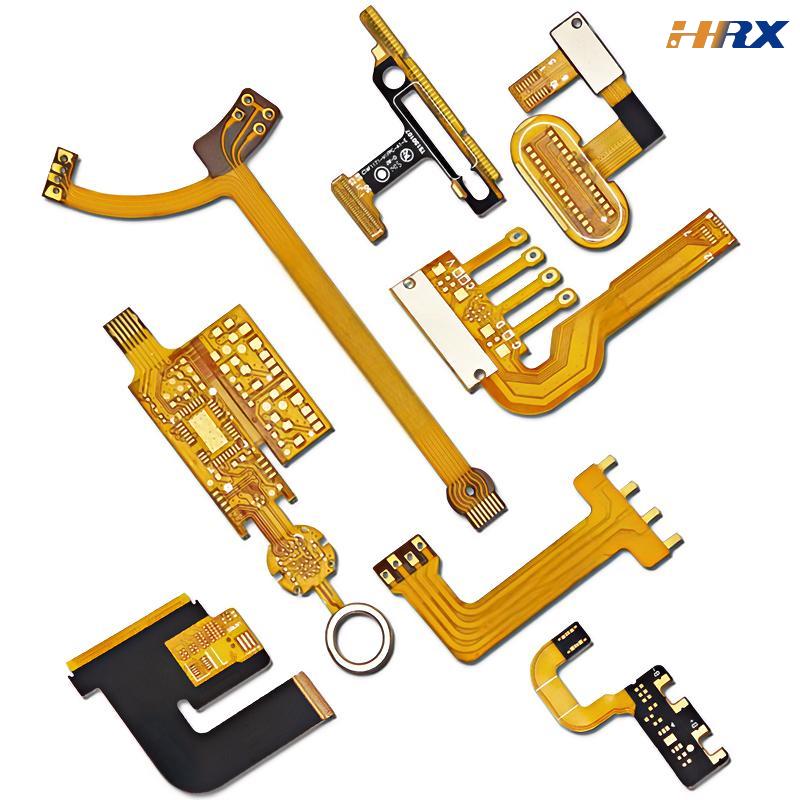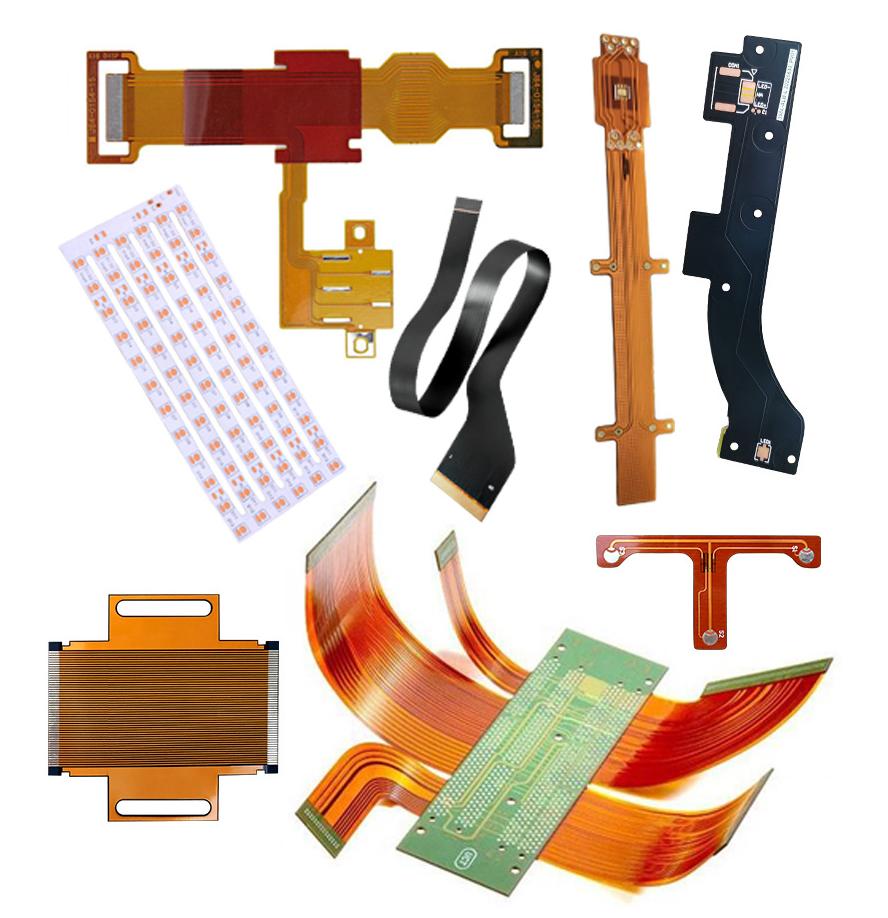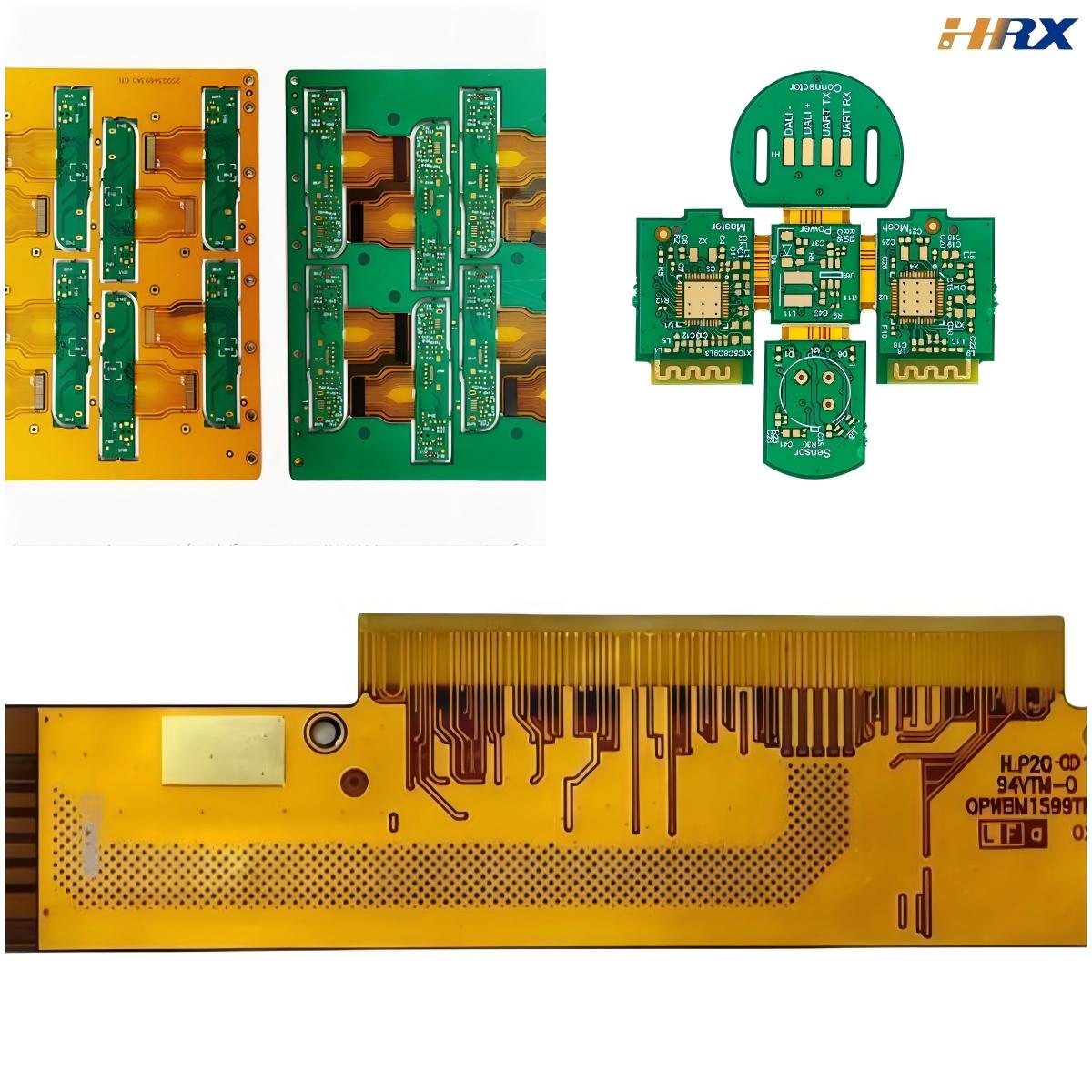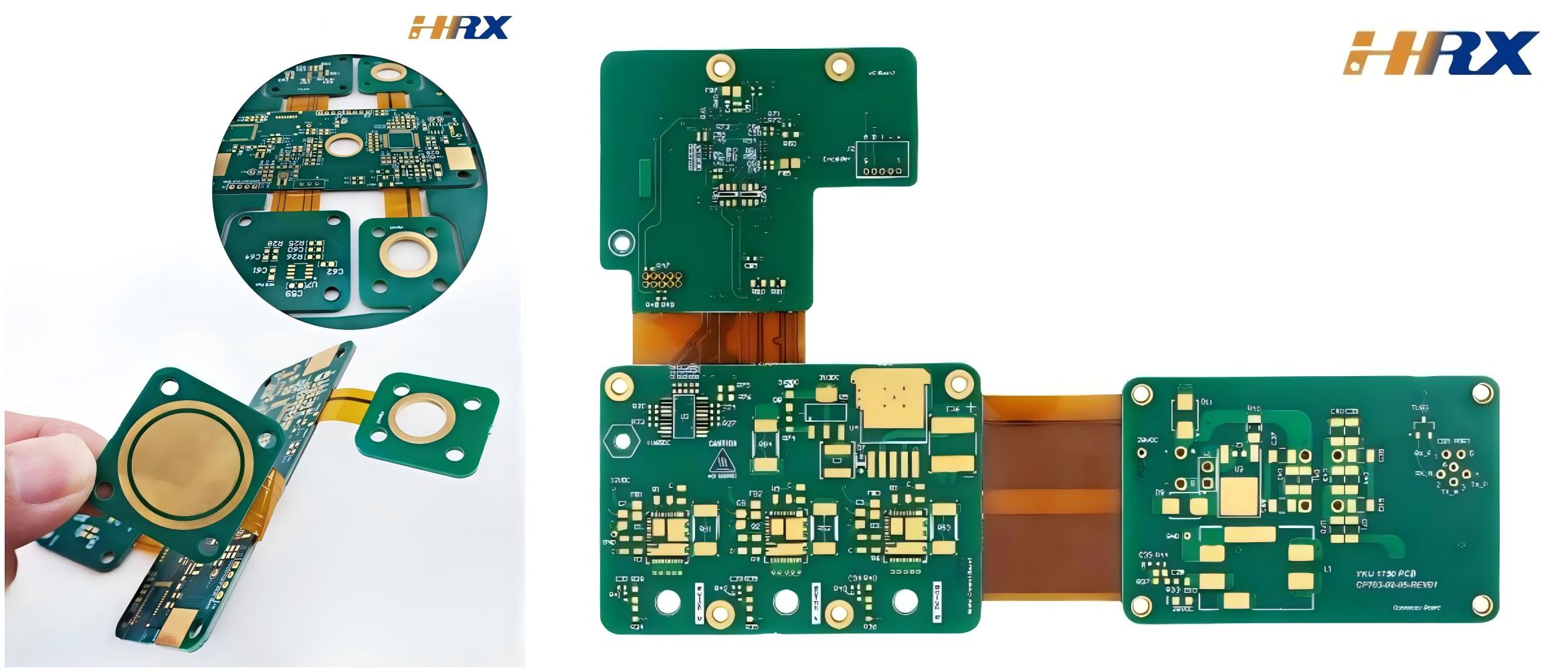Search
Comprehensive Guide to FPC Flexible Board Surface Treatment Processes: Technical Insights
- May 12,2025
-
Share
In the highly specialized domain of Flexible Printed Circuit (FPC) boards, surface treatment processes are the linchpin in defining product performance, reliability, and longevity. Each surface treatment method, with its unique characteristics, offers distinct advantages and drawbacks. As Shenzhen Huaruixin Electronics Co., Ltd., a renowned global ODM/OEM manufacturer with expertise in the design, development, and large - scale production of FPCs, PCBs, and Rigid - Flex Printed Boards, we bring a wealth of professional experience to the table, aiming to provide in - depth technical analysis and valuable industry insights.

1. Hot Air Solder Leveling (HASL)
Hot Air Solder Leveling, a widely - used surface finish in the FPC industry, follows a standardized process flow: micro - etching, pre - heating, flux coating, solder spraying, and cleaning. This process is highly regarded for its ability to provide an extended shelf life for FPCs. Post - PCB fabrication, the copper surface achieves complete wetting, ensuring a thorough tin coverage prior to soldering, which is crucial for lead - free soldering applications. HASL's maturity, cost - effectiveness, and compatibility with visual inspection and electrical testing make it a popular choice in many manufacturing scenarios.
However, HASL has its limitations. Its relatively poor surface planarity renders it unsuitable for wire bonding and poses challenges in high - precision Surface - Mount Technology (SMT) applications, especially for fine - pitch components. Moreover, it is not an ideal option for contact switch designs. During the solder spraying phase, copper dissolution occurs, and the board endures high - temperature exposure, which can be problematic for ultra - thick or ultra - thin FPCs, resulting in operational inefficiencies. At Shenzhen Huaruixin Electronics, we conduct meticulous process evaluations, taking into account factors such as component density, board thickness, and soldering requirements, to determine the viability of HASL for each project, ensuring optimal product quality.
2. Organic Solderability Preservative (OSP)
The Organic Solderability Preservative process, encompassing degreasing, micro - etching, pickling, pure water rinsing, organic coating, and final cleaning, stands out for its straightforward process control compared to other surface treatment methods. OSP offers several significant advantages. Its simplicity enables a smooth production flow, while the resulting ultra - flat surface is highly conducive to lead - free soldering and SMT assembly. Reworking is relatively hassle - free, and the process is well - adapted to horizontal line production. Additionally, OSP allows for the coexistence of multiple surface treatments on a single board, such as OSP + Electroless Nickel Immersion Gold (ENIG), providing flexibility in design. Its cost - effectiveness and eco - friendly nature further enhance its appeal.
Despite these benefits, OSP has certain drawbacks. The number of reflow soldering cycles is limited, typically allowing for two cycles before the protective film may degrade. It is not suitable for press - fit connections and wire bonding applications. Visual inspection and electrical testing can be challenging due to the thin and transparent nature of the OSP film. N2 gas shielding is often required during SMT operations, and SMT rework is not recommended. Stringent storage conditions are necessary to maintain the integrity of the OSP - coated surface. Our company has developed comprehensive quality control protocols and optimized production parameters to maximize the advantages of OSP while mitigating its potential risks.
3. Full - board Nickel - Gold Plating
Full - board Nickel - Gold Plating provides an extended storage period of over 12 months, making it an excellent choice for applications requiring long - term shelf stability. It is particularly well - suited for contact switch designs and gold wire bonding operations, and it facilitates accurate electrical testing.
However, this surface treatment method comes with higher costs, primarily due to the use of a relatively thick gold layer. Electroplating gold fingers necessitates additional design considerations for electrical conductivity. In soldering applications, inconsistent gold thickness can lead to brittle solder joints, compromising joint strength. Surface uniformity issues may also arise during the electroplating process, and the plating may not fully cover wire edges, limiting its compatibility with aluminum wire bonding. Through continuous R & D efforts and process optimization, Shenzhen Huaruixin Electronics has refined the nickel - gold plating process to improve coating uniformity and joint reliability, ensuring high - quality FPC production.
4. Immersion Gold
The Immersion Gold process, involving multiple steps such as deacidification cleaning, micro - etching, pre - immersion, activation, electroless nickel plating, and electroless gold immersion, is a complex yet highly effective surface treatment method. It offers outstanding oxidation resistance and long - term storage capabilities. The flat surface finish is ideal for soldering fine - pitch components and small - sized devices, making it the preferred choice for PCB boards with buttons, such as those used in mobile phones. Immersion gold - treated FPCs can withstand multiple reflow soldering cycles without significant degradation in solderability and serve as an excellent substrate for Chip - On - Board (COB) wire bonding.
Nonetheless, immersion gold has its challenges. The process is costly, and soldering strength can be an issue. The electroless nickel process is susceptible to the "black pad" defect, which can compromise the reliability of the FPC. Over time, the nickel layer may oxidize, raising concerns about long - term product performance. Our company's technical team continuously explores innovative solutions, such as improved chemical formulations and process controls, to address these issues and enhance the overall quality and reliability of immersion - gold - treated FPCs.
5. Immersion Tin
Immersion Tin is highly suitable for horizontal line production and fine - line processing, making it an ideal choice for modern FPC manufacturing. It is fully compatible with lead - free soldering and particularly well - suited for press - fit technology. The excellent surface planarity of immersion tin - treated FPCs ensures seamless SMT assembly.
However, immersion tin has its limitations. Strict storage conditions are essential, with a recommended storage period of no more than six months to prevent the growth of tin whiskers, which can cause short circuits. It is not suitable for contact switch designs. The soldermask process requirements are stringent, as any deficiencies can lead to soldermask delamination. N2 gas protection is advisable during multiple soldering operations, and electrical testing can be complicated. Leveraging our extensive production experience, Shenzhen Huaruixin Electronics has implemented rigorous quality control measures at every stage of the immersion tin process to ensure consistent product quality and reliability.
6. Immersion Silver
The Immersion Silver process, characterized by its simplicity, is well - suited for lead - free soldering and SMT applications. It offers an extremely flat surface finish, making it an attractive option for fine - line FPCs. Its cost - effectiveness further adds to its appeal.
However, immersion silver requires strict storage conditions to prevent contamination. Soldering strength issues, such as the formation of micro - voids, are common concerns. Electromigration and galvanic corrosion between the silver and the underlying copper can also occur, posing risks to the long - term reliability of the FPC. Electrical testing can be challenging due to the unique properties of the immersion silver surface. Our company is committed to continuous process improvement, exploring new materials and techniques to overcome these challenges and optimize the performance of immersion - silver - treated FPCs.

In conclusion, selecting the appropriate surface treatment process for FPCs is a critical decision that depends on various factors, including application requirements, cost considerations, and production feasibility. At Shenzhen Huaruixin Electronics Co., Ltd., our team of experts leverages in - depth technical knowledge, industry - leading experience, and state - of - the - art technology to make informed decisions, ensuring the delivery of high - quality FPC products that meet the diverse needs of our global customers.
We cordially invite new and old partners to engage with us. Explore more about our advanced FPC solutions on our website www.hrxfpc.com or reach out to our dedicated sales team via sales@hrxfpc.com for detailed consultations. Let's collaborate, innovate, and drive the future of FPC and PCB manufacturing together.

Let’s talk! We’ll provide the perfect solution for you!
-
 Huaruixin Electronics mainly produces printed circuit boards as the core business, to provide customers with one-stop solutions for FPC/PCB production, components sourcing and Assembly.
Huaruixin Electronics mainly produces printed circuit boards as the core business, to provide customers with one-stop solutions for FPC/PCB production, components sourcing and Assembly. - WHAT WE DO — PCB Design Solutions — Flex PCB Production — Components Sourcing — FPC&PCB Assembly
- PRODUCTS — Single Sided Flexible Circuits — Double Sided Flexible Circuits — Multilayer Flexible Cirucits — Rigid-Flex Circuits — FPC Assembly — PCB Assembly
- CAPABILITY — FPC Capability — Rigid-Flex Capability — PCB Capability — Assembly Capability
- Copyright © 2024 Shenzhen Huaruixin Electronics Co., Ltd. All Rights Reserved.
- Design By BONTOP


